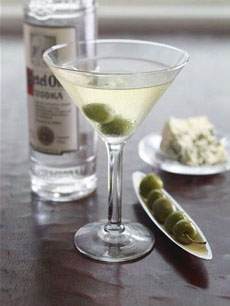FOOD 101: For National Vodka Day, The History Of The World’s #1 Spirit
|
October 4th is National Vodka Day. Vodka was once rarely consumed outside of Europe. Today, it’s the world’s top-selling spirit. Its popularity is owed in part to its versatility, as well as to its numerous appearances in pop culture—from James Bond’s “shaken not stirred” Vodka Martini to Carrie Bradshaw’s Cosmopolitan. Vodka, which has a neutral flavor, blends well with many other flavors, making it a perfect choice for seasonal, nouvelle and experimental concoctions—which resulted in practically-standard choices like the Chocolate Basil Martini and Green Tea Martini. Vodka is a clear liquor, mostly made from water and ethanol distilled from a fermented substance, such as grapes, potatoes or wheat. Both Russia and Poland claim to be the originators of vodka. The first identifiable Polish vodkas appeared in the 11th century and were used as medicines—as were most spirits. The first documented distillery was recorded in the Russian town of Khylnovsk in 1174. Commercial production was established by the 14th century. The first recorded exports of Russian vodka (to Sweden) were documented in 1505. Early vodka was distilled only once. However, vodka makers soon caught on to the benefits of multiple distillations, which produce higher alcohol content and greater quality, by removing impurities. Since early production methods were crude, fruit, herbs or spices were used to mask the imperfections. (TRIVIA: In Russia, the air bladders of fish were once used to remove impurities and improve taste after distillation.) In the 18th century, a professor in St. Petersburg discovered the method of purifying alcohol using charcoal filtration, and this process is still widely used today. Owning distilleries became the exclusive right of the Russian nobility in 1716. In 1894, in an attempt to control vodka quality, a law was enacted to make the production and distribution of Russian vodka a state monopoly. By contrast, making vodka in Poland was easy: In 1546, the King of Poland issued a decree extending the right to make vodka to every citizen. Vodka reached other parts of Europe by the 19th century, but it took another century to cross the pond. It came to the U.S. by way of France after World War II. While vodka is usually part of a Martini, the Martini, which dates to the 19th century, was originally made with gin and vermouth (the history of the Martini). Vodka was largely unknown by most drinkers of spirits. Vodka sales did not take off in the U.S. until the 1950s, when a business-savvy food and spirits distributor introduced the Moscow Mule (made with vodka, lime juice and ginger beer). The Mule kicked off a vodka craze. The first notation of a Vodka Martini is found in a 1951 cocktail recipe book. But still, interest in vodka was moderate at best. In the 1960s, vodka got a second boost from a man named Bond, James Bond. Agent 007’s “Vodka Martini, shaken not stirred” catapulted this now-classic cocktail to instant stardom (photo #1). But note: Many people still enjoy the classic Gin Martini: The botanicals in gin add more flavor to the drink. A Gin Martini with cocktail onions is called a Gibson (photo #2). Vodka Gibsons are also made. Poland and Russia have a centuries-old tradition of making flavored vodkas, infusing the neutral alcohol with numerous botanicals: blackberries, bison grass, dill, coriander, caraway seeds, horseradish, roots and other flavors, including imported spices like caraway, ginger and peppercorns [source]. But no one could have been prepared for the explosion in flavored vodkas in the late 1980s, led by Absolut, which introduced Absolut Citron to the U.S. in 1988. It was followed by Absolut Mandarin, Peppar and Vanilia, and now includes flavors from Mango to Raspberri. Other vodka distillers followed suit, and led to almost every imaginable infusion. Chile vodka and cucumber vodka enhanced the Martini nicely, while other cocktails—Apple Martinis, Flirtinis (vodka, Champagne and pineapple juice), Chocolate Martinis—stretched the meaning of “Martini.” |
|
|
|
Vodka martini madness swept across the U.S. Some “martini bars” boasted hundreds different of martini cocktails. Vodka cocktails took center stage again when Carrie Bradshaw and her “Sex and the City” crew began sipping Cosmopolitans (photo #4): four parts citron vodka, two parts Cointreau or triple sec, two parts cranberry juice and one part fresh lime juice when the television series, debuted in 1998. Today, vodka accounts for more than one out of every four bottles of distilled spirits consumed in the U.S. America loves its vodka: Super-premium (high-quality, handcrafted) is now the fastest growing vodka segment in the U.S. and now constitutes nearly 40% of total vodka sales. Bottoms up!
|
||



